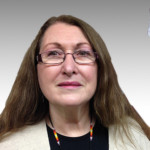The South Dakota Department of Education (SD DOE) and the South Dakota Department of Tribal Relations, Office of Indian Education (SD DTR-OIE) are working to examine and improve the systemic supports available to Native American students and communities. This work is guided by the following opportunity statement:
Educators who serve Native American students are often at the intersection of different requirements, regulations, funding opportunities, and constraints. These factors can inhibit the capacity of educators to pursue evidence-based educational practices and approaches. However, they also present an opportunity to examine the “bright spots,” where educators embrace the intelligence of Native American children and use educational practices that draw from and build on indigenous knowledge to foster environments in which all children can achieve their potential.
The Region 11 Comprehensive Center (R11CC) is collaborating with the SD DOE and SD DTR-OIE to identify existing practices associated with positive Native American student outcomes in South Dakota schools. The R11CC, SD DOE, and SD DTR-OIE are working with stakeholders—such as tribal education agencies, the Indian Education Advisory Council, the Bureau of Indian Education, districts, and schools—to improve their capacity to define, implement, and share practices and interventions that are culturally responsive and improve Native American student achievement and success.
The first few years of the Bright Spots project focused on creating an implementation plan for the Oceti Sakowin Essential Understandings and Standards (OSEUS), which are standards designed to increase Native American student achievement and promote appreciation and understanding of Native American histories and cultures. The OSEUS had been legislated by the state of South Dakota, but there was no defined statewide plan or designated leader to put the standards into practice. The R11CC, SD DOE, and SD DTR-OIE worked to create that pathway using evidence-based practices, including the creation of an OSEUS Integration Guide with South Dakota teachers to use as a roadmap to integrate the OSEUS into content standards. Additionally, as part of the implementation work, the partnership worked to build the capacity and trust among all the in-state stakeholders.
In the partnership’s fourth year, the team is introducing a pilot in several schools, with the goal of supporting the effective implementation of the OSEUS. Pilot schools receive professional learning supports to learn and use the OSEUS Integration Guide, which is a tool that provides descriptions of successful implementation and includes resources for teachers to implement the OSEUS.
Long-term outcomes associated with this project include increased kinship, harmony, and cultural empathy between Native American and non-Native American South Dakotans; a scaled implementation of the OSEUS and other evidence-based practices for teaching Indigenous knowledge; increased reciprocity and reduced institutional barriers to collaboration among agencies; and increased Native American student academic achievement scores.
Related Resources
Using Bright Spots in South Dakota Indian Country to Increase Native American Student Achievement
Educators who serve Native American students are often at the intersection of different requirements, regulations, funding opportunities, and constraints. These factors can inhibit the capacity of educators to pursue evidence-based educational practices and approaches.
Heritage Language Learners and American Indian and Alaska Native Students
This infographic highlights the importance of promoting and elevating the Heritage languages of AI/AN multilingual learners (MLs).
Back-to-School Educator Toolkit
In preparation for a new school year—regardless of the operational setting—this guide was designed to provide a checklist for self care and intentional connection with colleagues.
Working Respectfully With Indigenous Communities Around Data, Research, and Evidence
This resource is intended to support state education agency (SEA) staff members as they build partnerships with tribal leaders to improve educational outcomes for Native students.
A Survey and Assessment of Culturally Based Education Programs for Native American Students in the United States
A review of the programs in the survey indicated that there were five types of culturally based education programs and four types of programs that were not culturally based.
Using Bright Spots in South Dakota Indian Country to Increase Native American Student Achievement
R11CC recently welcomed a new South Dakota Lead for the Bright Spots Project. Dr. Dorothy Aguilera-Black Bear brings a wealth of research and practitioner knowledge in culturally responsive education for preK–12 schools, and nonprofit sector experience in youth and community

